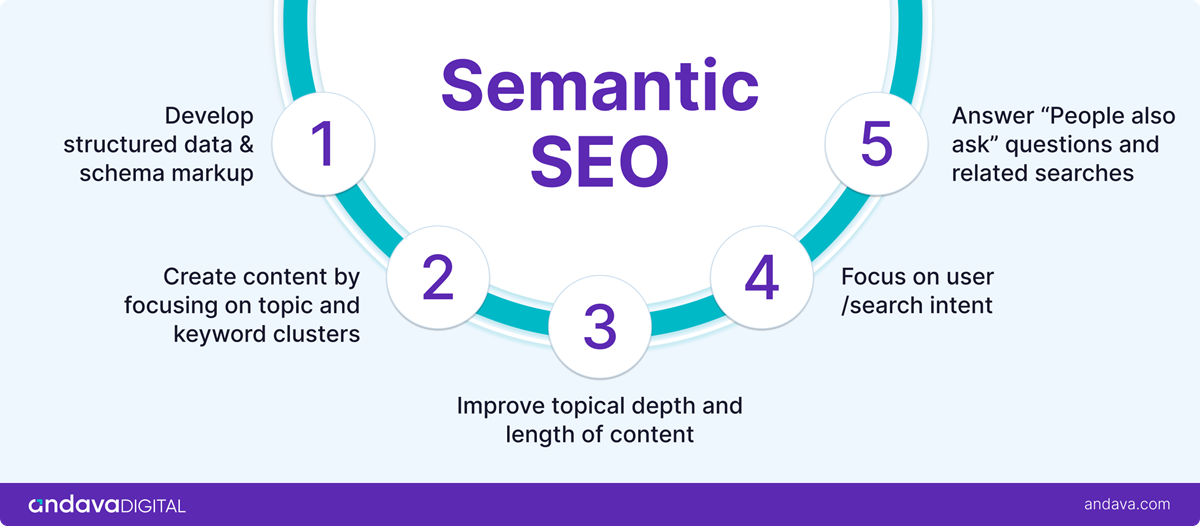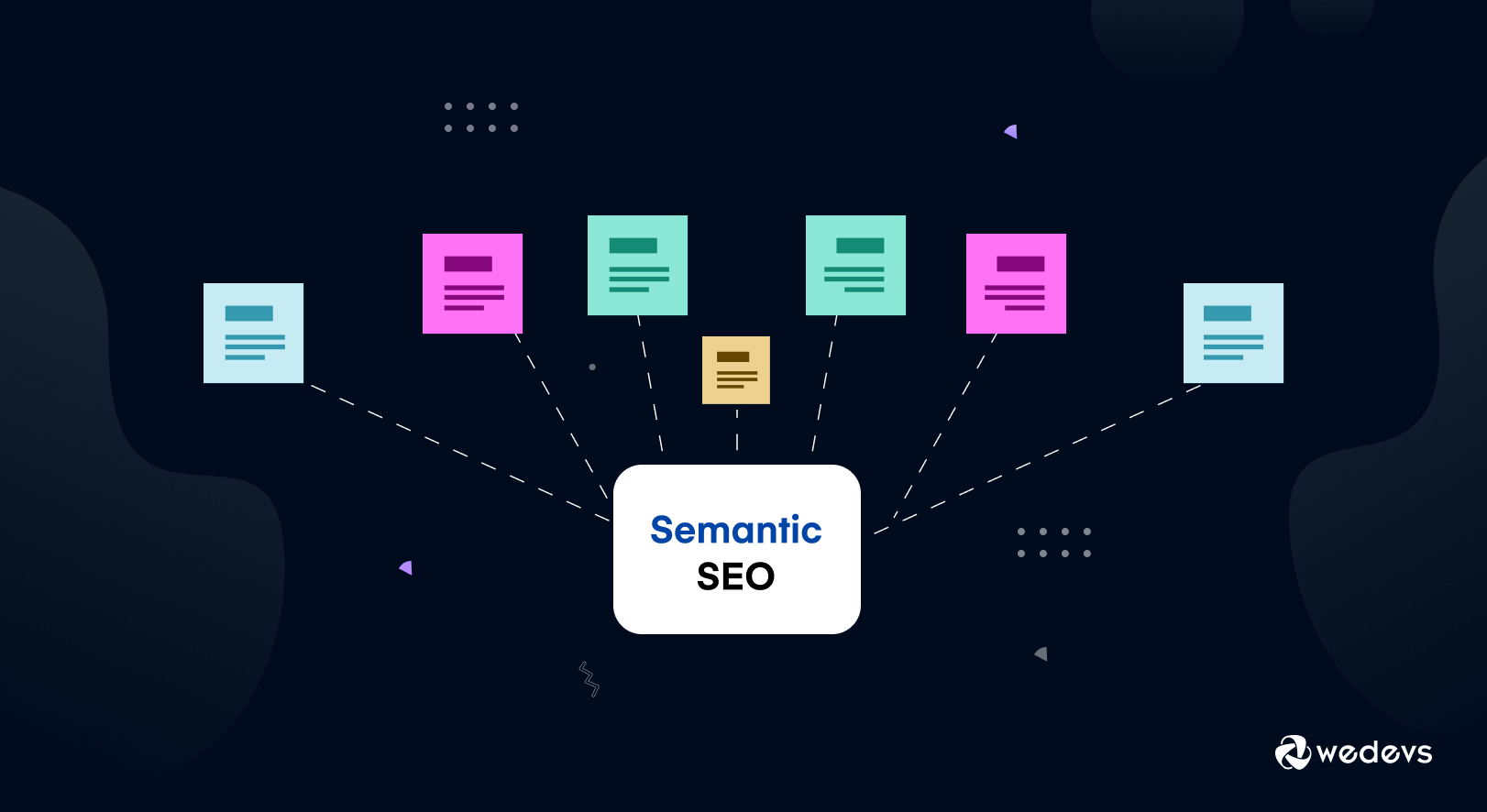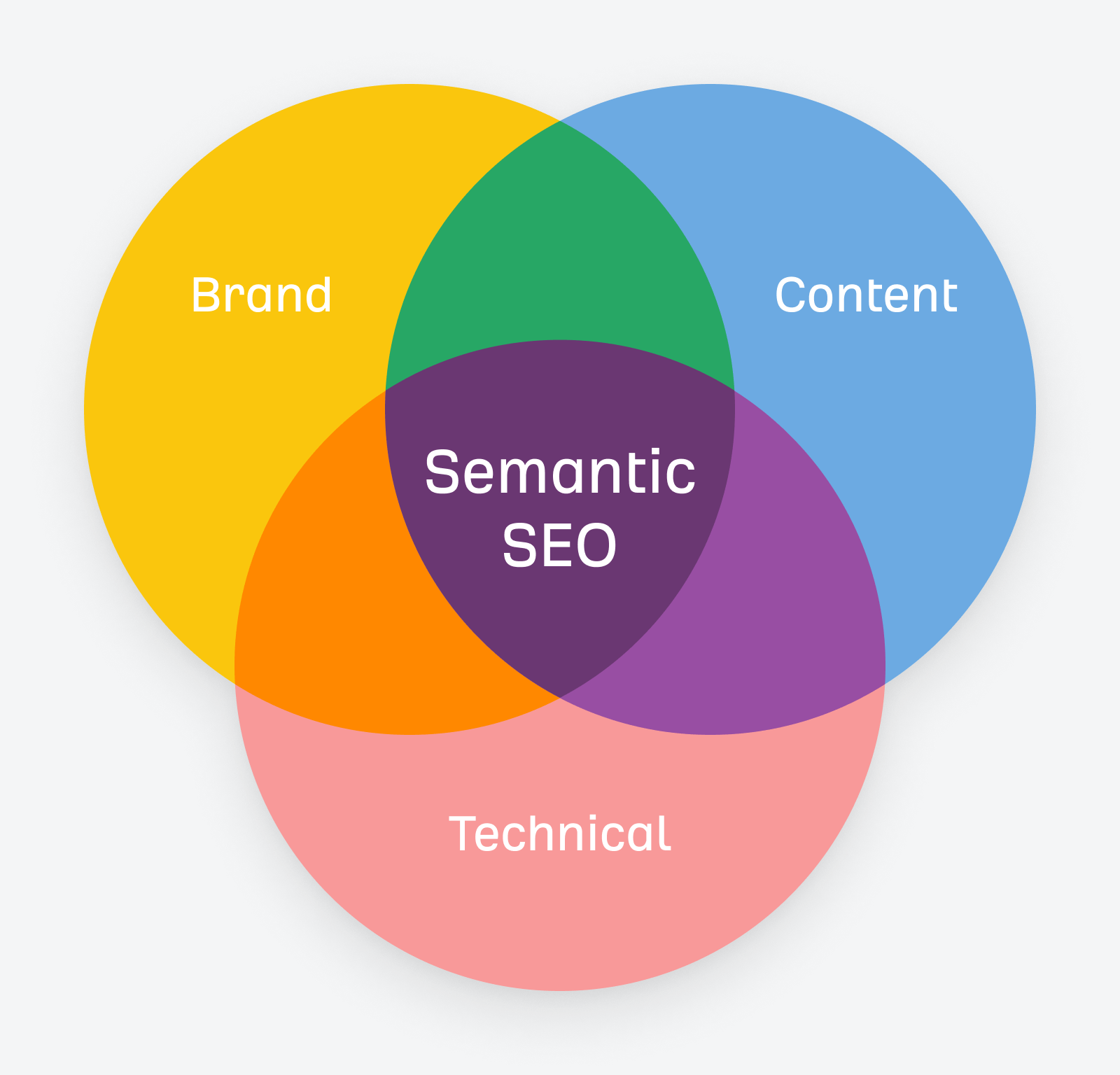Advanced content optimization using Semantic SEO and Latent Semantic Indexing (LSI) involves creating content that focuses on meaning, context, and user intent rather than just targeting isolated keywords. This approach helps search engines better understand the thematic depth and relevance of your content, improving rankings and user engagement.
Semantic SEO
Semantic SEO is a strategy that optimizes content around topics and user intent rather than single keywords. It leverages the understanding of entities (people, places, things), their attributes, and relationships to provide comprehensive, contextually relevant content. Key aspects include:
- Topic-based content creation: Focus on covering a topic thoroughly, using related keywords, synonyms, and answering related user queries to establish topical authority.
- Keyword clustering: Group related keywords and phrases into clusters to cover a topic comprehensively.
- Schema markup and structured data: Use schema to help search engines understand the content structure and enhance rich snippets in search results.
- Internal linking with descriptive anchor text: Build a logical content hierarchy and improve navigation.
- Use of semantic keywords and synonyms: Incorporate related terms naturally to signal semantic relevance.
- Regular monitoring and updating: Keep content fresh and aligned with evolving search intent and algorithms.
Semantic SEO helps search engines interpret the meaning behind queries, enabling them to deliver more accurate and useful results, including featured snippets and AI-generated overviews.
Latent Semantic Indexing (LSI)
LSI is a mathematical technique used to identify relationships between terms and concepts within large bodies of text by analyzing patterns of word co-occurrence. It helps search engines understand the context and semantic relationships between words beyond exact keyword matches.
- How LSI works: It reduces the dimensionality of the document-term matrix using Singular Value Decomposition (SVD) to group semantically related words and concepts.
- LSI keywords: These are terms conceptually related to your primary keywords (e.g., for "digital marketing," LSI keywords might be "online advertising," "SEO strategies," "content creation").
- Benefits: Using LSI keywords naturally in content enriches context, improves relevance, and helps search engines better understand the topic, leading to higher rankings.
- Tools: LSI Graph, Google Keyword Planner, and other SEO tools can help identify LSI keywords.
- Practical application: Integrate LSI keywords naturally within content, create comprehensive coverage of topics, and use structured data to enhance semantic understanding.
LSI moves SEO beyond exact keyword matching to a more nuanced understanding of content relevance and user intent.
Comparison and Integration
| Aspect | Semantic SEO | Latent Semantic Indexing (LSI) |
|---|---|---|
| Focus | Meaning, context, user intent, and topical authority | Mathematical analysis of term relationships and co-occurrence patterns |
| Approach | Topic clusters, entities, schema markup, internal linking | Use of semantically related keywords to enrich content context |
| Goal | Provide comprehensive, user-intent-aligned content | Help search engines understand deeper semantic relationships |
| Tools | SEO tools for keyword clustering, schema markup tools | LSI keyword generators like LSI Graph, Keyword Planner |
| Outcome | Better rankings, rich snippets, improved user engagement | Improved keyword relevance and contextual SEO performance |
In practice, Semantic SEO and LSI complement each other: Semantic SEO provides the strategic framework for topic-focused content creation and site structure, while LSI offers a tactical method to identify and incorporate semantically related keywords that enrich content context and relevance.
In summary, advanced content optimization through Semantic SEO and LSI involves creating richly contextualized, topic-focused content that aligns with user intent and uses semantically related terms to help search engines understand and rank your content more effectively. This approach moves beyond traditional keyword stuffing to a more sophisticated, meaning-driven SEO strategy.





